
Phlox: which one to choose?
Find the ideal variety for your garden
Contents
Easy, floriferous perennials, Phlox offer a generous star-shaped flowering in spring or summer. Phlox take very diverse forms depending on species. Some, such as dwarf moss Phlox (Phlox subulata, P. douglasii) are prostrate and will not exceed 10 cm in height at ripeness and are perfect for rock gardens or as groundcover whereas large Phlox paniculata and P. maculata with upright habit and great height (up to 1.5 m tall) are well suited to borders. If paniculate Phlox appreciate fertile ground that stays cool in summer, small Phlox that form a tapetum will prefer, for their part, a dry, rocky soil.
There are just over 80 species and more than 800 horticultural varieties! It can therefore sometimes be difficult to choose from this wide palette. Choice of Phlox can be guided by size, by use but also by colour or flowering duration, fragrance and by nature of your soil.
Discover our tips to choose Phlox suited to your preferences and needs!
Depending on use
Phlox offer a fine diversity of sizes, ranging from 10–20 cm for the lowest, up to 1.50 m for large paniculate phlox, and a variety of habits, cushion or upright, allowing use in different situations: in borders, as edging, in rock gardens, on slopes or low walls and even in flowering containers. There are also intermediate varieties, such as Phlox carolina ‘Bill Baker’, which forms clumps 45–50 cm high.
In borders
Phlox paniculata and maculata are valued for their erect habit and large size, from 70 cm up to 1.50 m, which allows attractive use in borders, behind lower plants.
For back of border positions, choose large, vigorous phlox such as Phlox paniculata ‘Jeana‘ (1 m to 1.50 m in height), Phlox maculata ‘Natasha’ (it can reach 90 cm at ripeness), ‘Fujiyama’ (which grows at least to 90 cm), paniculate phlox paniculata ‘Hesperis’ ‘Lichstpel’, ‘Uspech’, and Phlox maculata ‘Omega’ are other varieties of good size.
In centre of small borders and in intermediate positions within larger schemes, opt for slightly more compact varieties such as Phlox paniculata ‘Bright Eyes’, or ‘Jade’, reaching about 45–75 cm in height.
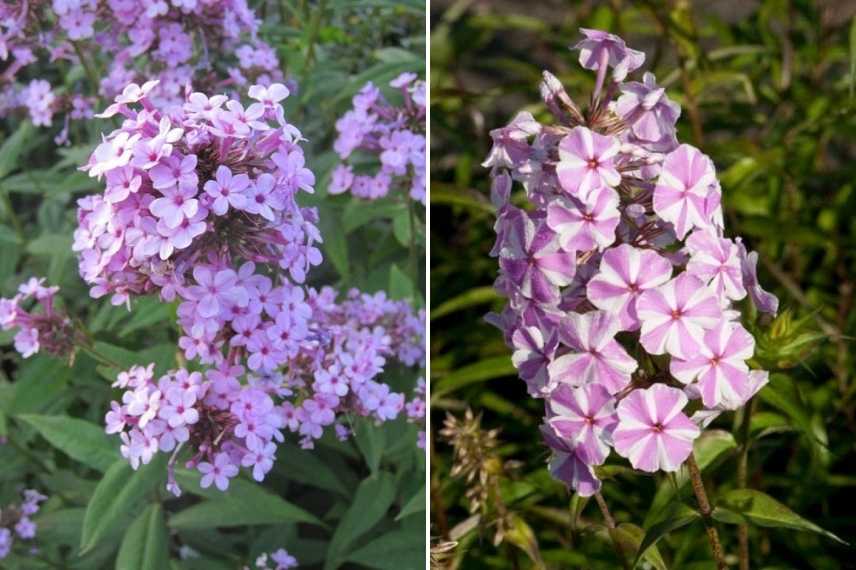
Phlox paniculata ‘Jeana’ and Phlox maculata ‘Natasha’
In rock gardens
Low, mat-forming phlox such as Phlox subulata, commonly called moss phlox, bifida and douglasii, are perfect for rock gardens. They form attractive groundcovers or small rounded cushions, flowering in spring, hardy and often evergreen. favour varieties such as Phlox sulfata ‘Candy Stripes’, Phlox stolonifera ‘Home Fires‘, Phlox subulata ‘Emerald Cushion Blue’, Phlox divaricata ‘White Perfume’, and Phlox douglasii ‘Waterloo’. They rarely exceed 20 cm in height. Their stems root easily on soil and are also used to cover a dry slope or a low wall.
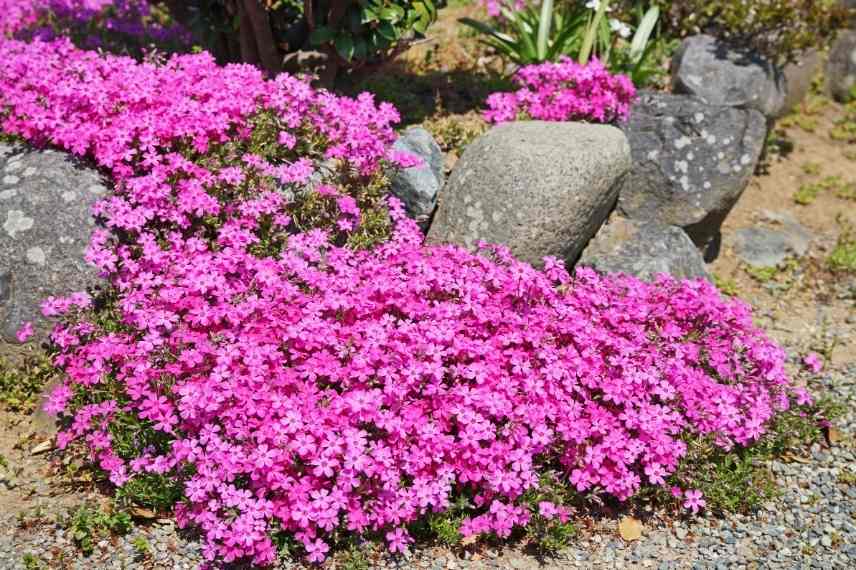
Phlox subulata in rock garden
In pots
Small varieties not exceeding 40 cm in any direction, with a very compact, dense and ramified habit are perfect in pots where they form charming, rounded, woolly-looking clumps. Phlox paniculata ‘Tequila Sunrise’, ‘White Eye Flame’ are very compact paniculate phlox varieties particularly suited to creating beautiful flowering pots for balcony or terrace. Phlox paniculata ‘Purple Flame’ also belongs to a series of very compact paniculate phlox that perform brilliantly in flowering containers, as does ‘Bambini Desire’, with exceptionally compact growth. Phlox from the ‘Flame’ series, developed by Bartel’s Breeding in the Netherlands, do not exceed 40 cm in height and 30–35 cm in width.

Phlox paniculata ‘Tequila Sunrise’ and Phlox paniculata ‘Purple Flame’
Read also
Phlox: planting, growing and careDepending on the colour of the flowers
Phlox offer a multitude of star-shaped flowers often in soft shades: white, soft pink, mauve or blue but sometimes also vivid, bright red, vivid pink or purple. They are now available in a range of colours.
Phlox with pink-mauve flowers
The Phlox carolina ‘Bill Baker’ is one of the classics with its lily-pink little flowers, as is ‘Monica Lynden Bell’, which, with its very pale charming pink flowers, is a safe choice. Phlox stolonifera ‘Home Fires’ forms a tapetum covered with small intense, vivid pink flowers, ‘Forever Pink’ literally disappears beneath panicles of pink-mauve flowers, as does ‘Fashionably Early Flamingo’, while ‘Rosa Pastel’ charms with its pale pink little flowers. ‘Goldmine’ and ‘Septemberglut’ stand out for their superb flowering in magenta to cherry-pink.
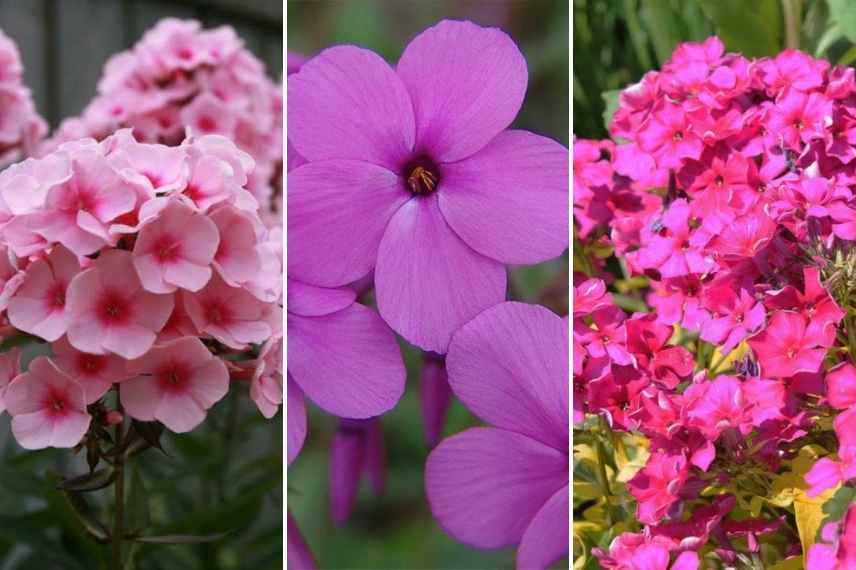
Phlox ‘Rosa Pastel’, Phlox stolonifera ‘Home Fires’, Phlox paniculata ‘Goldmine’
Phlox with white flowers
From April–May, Phlox divaricata ‘White Perfume’ and ‘White Delight’ are covered with pure white flowers. The Phlox paniculata ‘Tiara’ is a recent variety of paniculate Phlox, offering exquisite flowering reminiscent of white roses, delightfully scented. A bluish-white tone is found in ‘Dirigo Ice’.

Phlox ‘White Delight’ et Phlox divaricata ‘Dirigo Ice’
Phlox with red flowers
The Phlox ‘Starfire’, ‘Red Flame’, ‘Orange Perfection’ and ‘Tequila Sunrise’, with their bright cherry-red or vermilion flowers, are among the most colourful varieties. In addition to its intense colour, Phlox paniculata ‘Coral Flame’ is probably one of the lowest and most compact paniculate Phlox varieties, ideal for colouring containers!
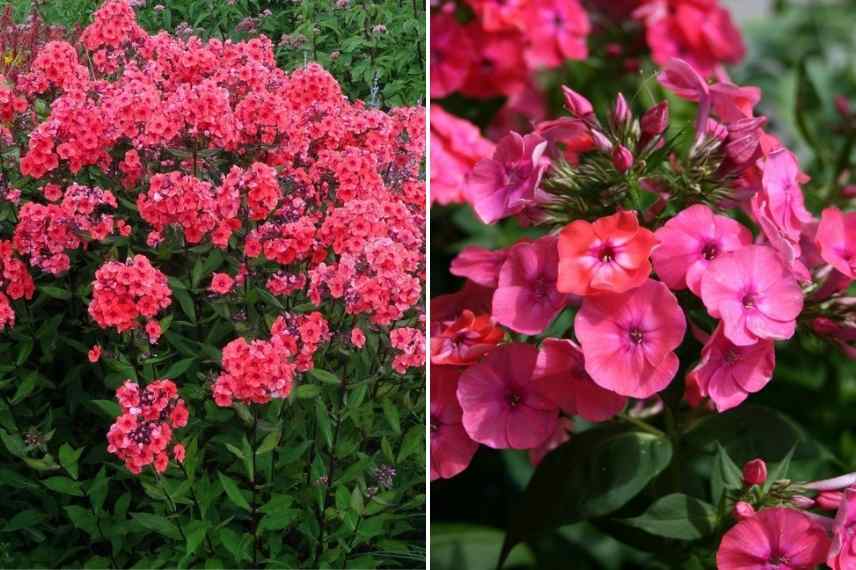
Phlox ‘Starfire’ et Phlox ‘Coral Flame’
Phlox with blue flowers
Some varieties of Phlox bear azure-coloured flowers. The lavender-blue colour with a purplish-red eye of the flowers of Phlox ‘Chattahoochee’ is much appreciated. The Phlox paniculata ‘Blue Flame’ shows a pale white‑bluish wash of ultramarine. The Phlox stolonifera ‘Blue Ridge’ is a creeping phlox variety forming pretty tapeta of blue-lilac flowers.
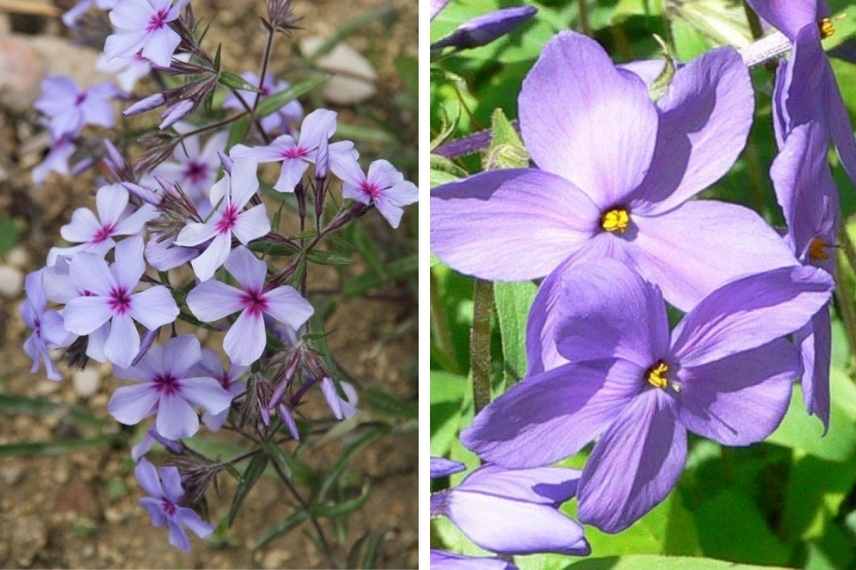
Phlox ‘Blue Ridge’ et Phlox ‘Chattahoochee’
Bicoloured Phlox
Often the centre of the flower is lighter or darker than the petals, offering a pretty contrast of shades. This is the case with Phlox paniculata ‘Amethyst’, which displays purple flowers highlighted by a purplish heart, or with ‘Graf Zeppelin’ with its magnificent white little flowers enlivened by a carmine-pink centre, and the sublime ‘Uspech’.
Sometimes phlox flowers are delicately striped like sweets, as with Phlox paniculata ‘Peppermint Twist’, ‘Bambini Candy Crush’ or Phlox maculata ‘Natasha’. The ‘Sherbet Blend’ variety exhibits a very unusual lime-green and soft-pink flowering, reminiscent of the panicles of some hydrangeas.
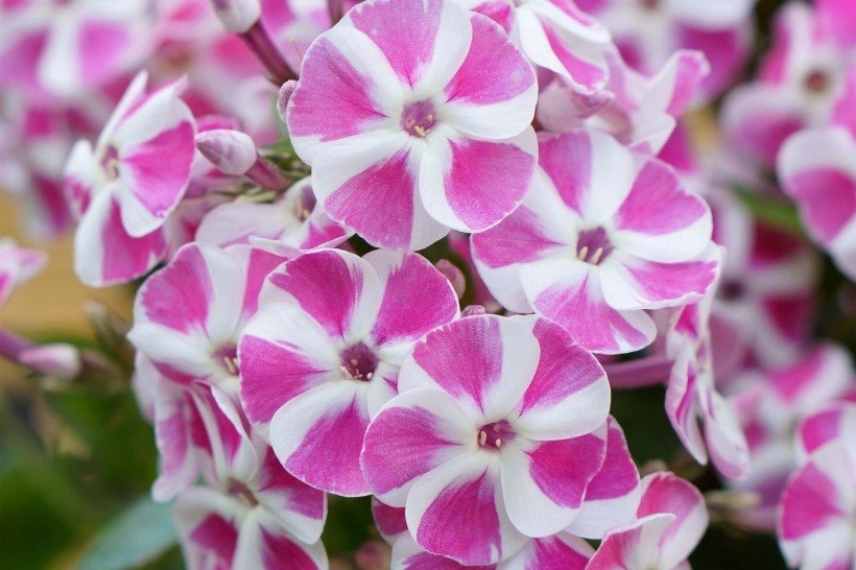
Phlox bambini ‘Candy Crush’
Discover other Phlox
View all →Available in 0 sizes
Available in 0 sizes

Available in 1 sizes
Available in 1 sizes
Available in 1 sizes
Available in 1 sizes
Available in 1 sizes
Available in 3 sizes
Available in 1 sizes
Available in 1 sizes
By flowering duration
Flowering period varies by species. Paniculate phlox flowers in summer, from July to September–October, while Phlox subulata flowers in spring, from April to June. It has a much shorter flowering period than its cousin. Although all are exceptionally generous, some latest-generation phlox stand out for their early and particularly long flowering. This is the case for hybrids such as ‘Fashionably Early Flamingo’ and ‘Early Crystal’, which are smothered for almost three months in a profusion of flowers. They have a perpetual flowering habit, beginning in June (sometimes as early as May) and lasting until July, often reflowering, though more modestly, in early autumn.
These varieties have also been selected for their excellent resistance to diseases, notably to powdery mildew and downy mildew, which often affect tall phlox.
Phlox paniculata ‘Bright Eyes’ offers arguably one of the longest flowering periods, flowering from early July until September.

Phlox ‘Early Cristal’
Depending on the scent
If there are a few scentless varieties of phlox, such as Phlox douglasii ‘Lilas Cloud’, most produce scented flowers, notably Phlox paniculata and divaricata. That’s what gives some varieties their name: ‘Clouds of Perfume’ and ‘White Perfume’ rank among the most fragrant phlox. Bear in mind that a sunny position will enhance the scent of flowers.
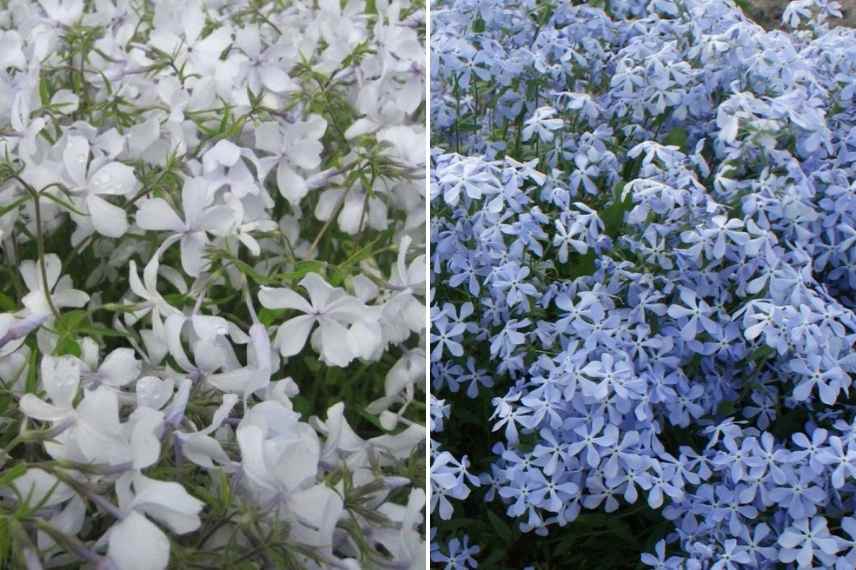
Phlox ‘White Perfume’ and Phlox ‘Clouds of perfume’
Depending on the nature of your soil
Not all phlox are grown the same way. In terms of soil type, preferences vary from species to species :
-
- Tall paniculate phlox, such as Phlox maculata and Phlox divaricata, prefer heavy, humus-rich, deep soils, even clay, that are well drained but not calcareous. They do best in soil that does not become too dry in summer, so that it remains cool. In warm climate, they will need regular watering and a mulch around the base during summer.
- Small creeping phlox, like Phlox subulata or Phlox douglasii, prefer to be planted in dry, stony, sandy or gravelly soil, even calcareous and very well draining. As they adapt to poor soil, they are perfect for rockeries and low walls. They tolerate sea spray well and cope better with lack of water than paniculate phlox. In damp regions, it is better to grow them on sloping ground, in a rockery, or as a flowering topping for a low wall.
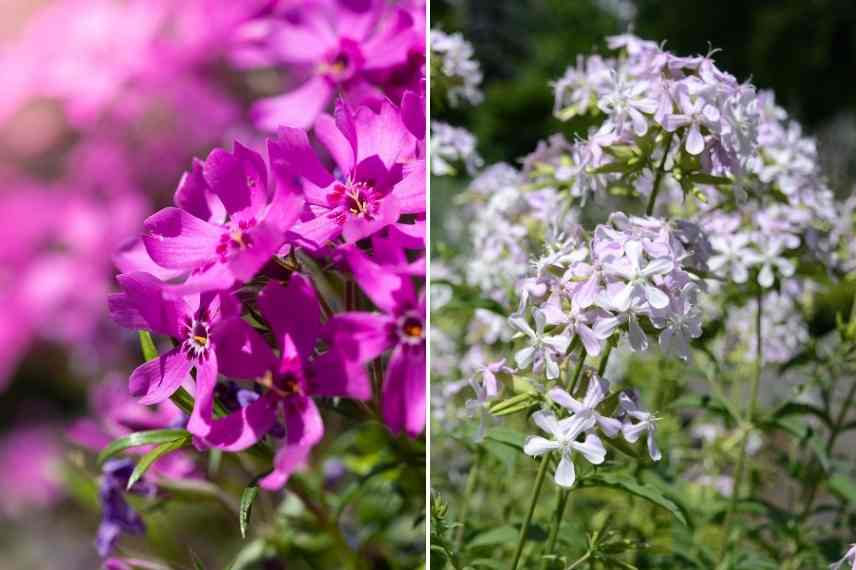
Phlox douglasii and Phlox divaricata
- Subscribe!
- Contents
































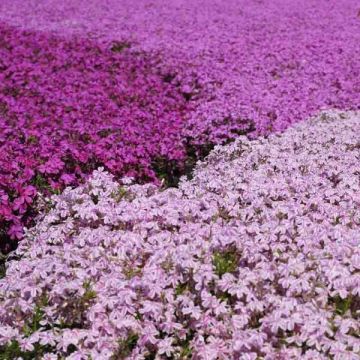

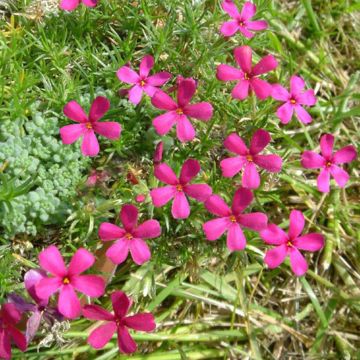
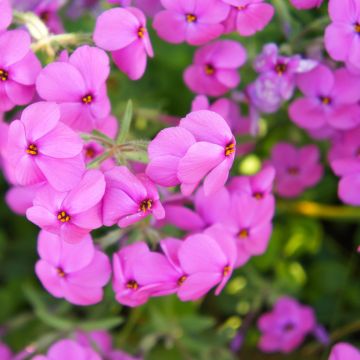
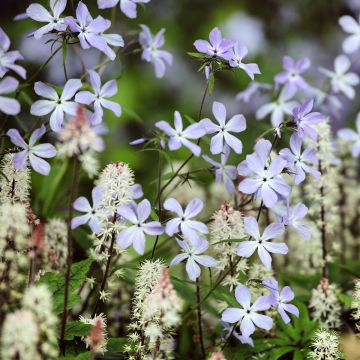
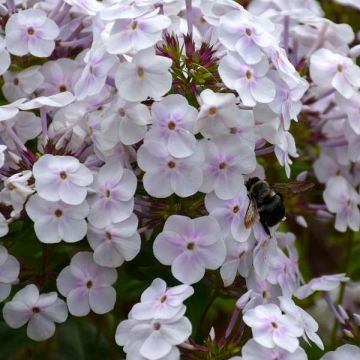
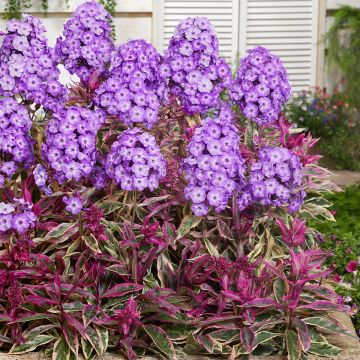
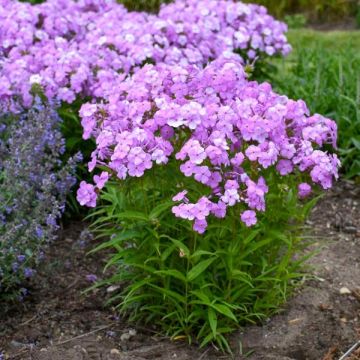
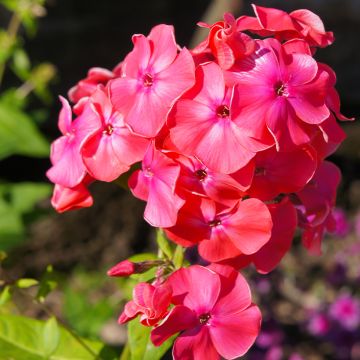
Comments